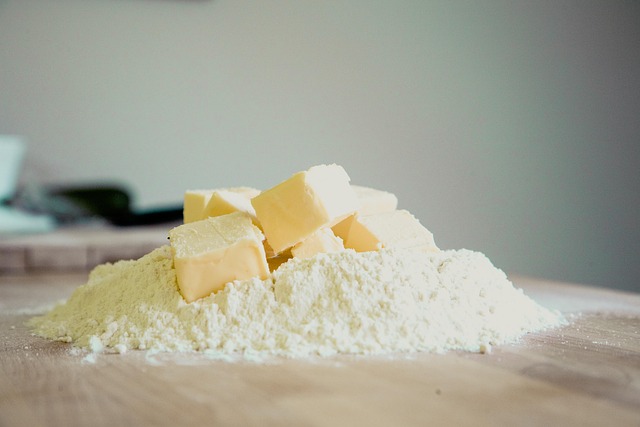Choosing eco-friendly kitchen cabinetry and integrating energy-efficient appliances significantly reduces a home's environmental impact. Traditional wood cabinets contribute substantial carbon emissions, whereas sustainable alternatives like recycled materials, reclaimed wood, and bamboo promote a circular economy. This trend aligns with consumer demand for environmentally conscious options, offering unique aesthetics while minimizing waste and energy consumption. When shopping, prioritize certified sustainable or recycled materials, low-VOC finishes, and energy-efficient features. Integrating these cabinets with efficient appliances creates an eco-friendly kitchen, enhancing sustainability and home value while reducing the carbon footprint.
“Looking to create a sustainable kitchen while reducing your environmental impact? Selecting eco-friendly cabinetry made from recycled or sustainable materials is a significant step. This comprehensive guide explores the crucial role kitchen cabinets play in sustainability, delving into the benefits of using eco-conscious materials like bamboo, reclaimed wood, and recycled steel. We’ll navigate how these choices align with energy-efficient kitchen appliances, offering practical tips for installation and selection to help you make informed, earth-friendly decisions.”
Understanding the Impact of Kitchen Cabinetry on Sustainability
The choice of kitchen cabinetry can significantly contribute to or mitigate a home’s environmental footprint, making it a crucial aspect when considering sustainability. Kitchen cabinets, traditionally made from virgin materials like wood, can have a substantial carbon impact throughout their lifecycle—from production and transportation to installation and eventual disposal. This is where eco-friendly alternatives, crafted from sustainable or recycled sources, step in as a more responsible option.
By selecting cabinetry made from recycled materials, reclaimed wood, or innovative sustainable resources, homeowners actively support a circular economy. These choices not only reduce demand for new raw materials but also minimize energy consumption and greenhouse gas emissions associated with manufacturing. Moreover, opting for energy-efficient kitchen appliances alongside these sustainable cabinets can further enhance the environmental benefits, ensuring that your home’s heart—the kitchen—becomes a beacon of eco-consciousness.
Exploring Sustainable and Recycled Materials for Cabinetry
When it comes to cabinetry, there’s a growing trend towards sustainability and recycling. Consumers are increasingly looking for eco-friendly options that minimize their environmental impact. Exploring sustainable and recycled materials for cabinetry offers a wide array of choices beyond traditional wood. Materials like bamboo, reclaimed wood, and recycled metal not only reduce waste but also provide unique aesthetic appeal.
These materials are not just visually appealing; they often have lower environmental footprints. For instance, bamboo grows rapidly and is highly renewable, making it an excellent alternative to conventional hardwoods. Similarly, recycled metal reduces the energy required for mining and processing, contributing to overall energy efficiency, especially when paired with energy-efficient kitchen appliances. This shift towards sustainable cabinetry not only benefits the planet but also adds a touch of modern, responsible design to any space.
Key Features to Look For in Eco-Friendly Kitchen Cabinets
When shopping for eco-friendly kitchen cabinets, several key features can help you make an informed decision. Firstly, look for products made from certified sustainable or recycled materials such as bamboo, reclaimed wood, or recycled metal. These materials not only reduce environmental impact but also offer unique aesthetics and durability. Additionally, ensure the cabinets are finished with low-VOC (volatile organic compound) paints or stains to minimize air pollution and promote better indoor air quality.
Another crucial aspect is energy efficiency. Opt for cabinetry designed with built-in features like insulated paneling, efficient lighting solutions, and integrated smart technology. These innovations can significantly reduce energy consumption, aligning with the goal of eco-friendly design. Moreover, consider brands that offer transparency in their supply chain and manufacturing processes, ensuring responsible sourcing and production methods.
Integration with Energy-Efficient Kitchen Appliances
When it comes to creating an eco-friendly kitchen, the integration of sustainable cabinetry with energy-efficient kitchen appliances is a powerful combination. These appliances play a crucial role in reducing the environmental impact of your space. By choosing models designed for efficiency, you can minimize energy consumption and lower your carbon footprint. From smart refrigerators that optimize cooling to induction cooktops that heat quickly and evenly while using less electricity, these appliances are a game-changer for sustainable living.
Sustainable cabinetry, crafted from recycled or sustainably sourced materials, pairs perfectly with this technology. Not only does it contribute to a healthier planet by reducing waste, but it also offers an aesthetically pleasing alternative to traditional options. The seamless fusion of eco-friendly cabinets and energy-efficient appliances creates a modern, responsible kitchen that not only benefits the environment but also adds value to your home.
Practical Tips for Choosing and Installing Sustainable Cabinets
When selecting eco-friendly cabinetry, look for brands that use certified sustainable or recycled materials. Check product labels and certifications like FSC (Forest Stewardship Council) for wood products to ensure they meet environmental standards. Many manufacturers now offer lines dedicated to sustainability, making it easier to find options that align with your values.
During installation, consider energy-efficient kitchen appliances and a water-efficient plumbing system to maximize the environmental benefits of your new cabinets. Properly dispose of or recycle any packaging materials to further minimize waste. Regular maintenance, such as cleaning with eco-friendly products, will keep your sustainable cabinets in top condition while reducing your carbon footprint.
When selecting kitchen cabinetry, choosing eco-friendly options that align with your sustainable lifestyle is a significant step towards reducing your environmental footprint. By opting for cabinets made from recycled or sustainable materials and pairing them with energy-efficient kitchen appliances, you contribute to a greener home while enjoying both functionality and style. Remember, small changes in our daily choices can collectively make a substantial impact on the environment, making informed decisions like these an important part of living sustainably.
